Contrabass clarinets come in two sizes. The larger is the Bb contrabass clarinet, also known as the BBb contra. The smaller is the Eb contrabass clarinet, also known as EEb contra, contra-alto, or (incorrectly) “contralto.” The Bb contra sounds an octave below a Bb bass clarinet, while the Eb contra sounds in the middle between a Bb bass and a BBb contra.
Contrabass clarinet mouthpieces also come in two sizes. The larger ones have an outer tenon diameter of approximately 36mm. The smaller ones measure approximately 32mm. (I hear that some oddball Eb contras are designed to take bass clarinet mouthpieces, which measure approximately 30mm, but I’m going to ignore those.)
Contrabass clarinet reeds come in two sizes as well. The larger ones are about 20mm wide at the tip, while the smaller ones are about 19mm wide at the tip. (Also, I have heard that some contra clarinet mouthpieces call for baritone saxophone reeds, which are about 18mm at the tip, so that’s something to watch out for.)
Now you might think that a larger contra would take a larger mouthpiece and a larger reed, while a smaller contra would take a smaller mouthpiece and a smaller reed. I think we can agree that that’s how it works if we’re talking about bass clarinets and alto clarinets. But with contrabass clarinets it just not this simple.
Here’s a counter example. Some Eb contra clarinets (primarily the metal Leblanc ones) take the larger-diameter mouthpiece, and some of these larger-diameter mouthpieces call for the wider reeds.
Let’s suppose you have a contrabass clarinet you want to play, and you’re trying to figure out which size mouthpiece and reed to use. Which mouthpiece should be self-evident. The mouthpiece receiver will be sized to accept either a 32mm or a 36mm mouthpiece. If you have the wrong size mouthpiece then it will not physically fit. Otherwise you’re probably good to go. (That said, I have found that the larger mouthpieces can vary by 1mm or so in diameter between brands. So sometimes it’s a tighter or looser fit than you would like. Usually this can be addressed by messing with the tenon cork.)
But which size reed to use is trickier. The larger and smaller contra reeds only differ by about 1mm in width, which isn’t much. It’s possible to play a wider reed on a mouthpiece that was designed for a narrower reed, and it’s also possible to play a narrower reed on a mouthpiece that was designed for a wider reed. I’ve done it both ways, and I can manage to produce notes. Sound quality suffers, though, so it’s worth the effort to make sure you’re using a reed with the correct width. Some people are playing the wrong reeds and don’t even know it.

In the picture above, the orange-box Rico reeds are the narrower 19mm ones. The Marca reeds and the ancient purple-box Vandoren reeds are both the wider 20mm ones. (I believe the newer blue-box Vandoren contra reeds are still 20mm, but I’m not positive.) It’s hard to tell how wide they will be without opening the box.
The Rico box is labelled “contra alto clarinet,” which is a hint that they might be the narrower ones. The Vandoren box is labelled “clarinette contre-basse,” which is a hint they might be the wider ones. The Marca box is labelled “CA/CB,” neutral.
If you’re squeaking a lot, or chirping when attacking notes, then maybe your reed is too wide or too narrow for your mouthpiece. (Or possibly your instrument has leaks that need to be repaired.) If your tone is too breathy then maybe your reed is too narrow for your mouthpiece. It doesn’t matter whether you’re playing a Eb contra or a Bb contra; all that matters is what your mouthpiece was designed to work with.
Leblanc contra mouthpieces (which can be used on most Bb contras and on Leblanc metal Eb contras) once took the wider reeds. Sometime around 1980 they changed, and Leblanc contra mouthpieces made since then take the narrower reeds. Some players with newer mouthpieces wish they had the older ones, claiming that they should perform better on the lower notes, but the only way to fix that is to obtain one of those older mouthpieces. Trying a wider reed on one of the newer mouthpieces will sound worse than using the narrower reed it was designed for.
Virtually all of the smaller (32mm tenon diameter) contra mouthpieces call for the narrower reeds. Some mouthpieces are even designed to take baritone saxophone reeds, and for those even the narrower contra reeds could be too wide, so beware. If your mouthpiece calls for narrow contra reeds, some players report that Vandoren bass saxophone reeds play better than orange-box Rico contra-alto reeds. (I have yet to try them.)
I play a Bundy Eb contra with a 32mm Selmer C* mouthpiece and a Vito Bb contra with a 36mm Selmer C* mouthpiece. Both of these play best with the narrower contra reeds. However the 36mm mouthpiece does also work somewhat with the wider contra reeds. Just looking at how the reed lays on the 36mm mouthpiece, the wider ones look like they should play better, but in my experience they don’t.
I also have a no-name 32mm contra mouthpiece that can use a baritone saxophone reed in a pinch, though it plays best with the narrower contra reeds. But when I try baritone saxophone reeds on the 32mm Selmer C* it doesn’t work very well.
BTW, all measurements mentioned above are approximate. I couldn’t find any official specs to quote, so I simply borrowed calipers (which I may or may not have used precisely) and measured my own equipment.
relevant links:
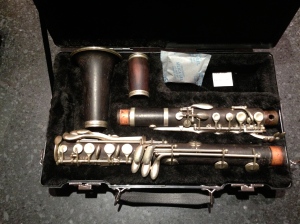
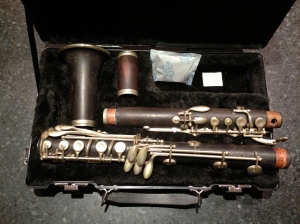
 While driving home from work today, I listened with interest to a
While driving home from work today, I listened with interest to a 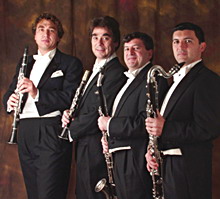
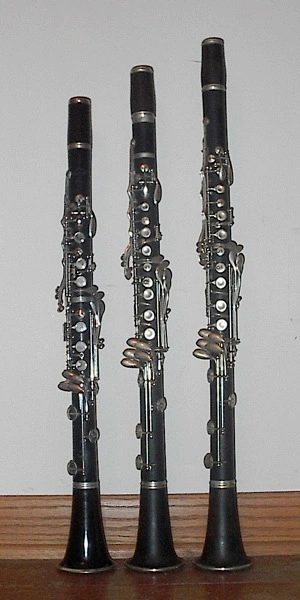
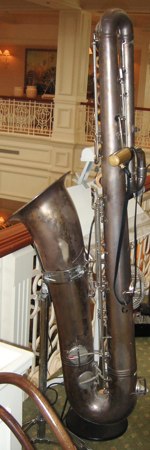 What’s unusual about this quartet is that instead of the usual soprano/alto/tenor/baritone they employ soprano/alto/tenor/bass. The bass saxophone can descend a half-octave lower than the baritone, which I suppose is handy for the bass lines of the short arrangements of Disney tunes they tend to play, but it may be that they were going for the eccentric visual appearance.
What’s unusual about this quartet is that instead of the usual soprano/alto/tenor/baritone they employ soprano/alto/tenor/bass. The bass saxophone can descend a half-octave lower than the baritone, which I suppose is handy for the bass lines of the short arrangements of Disney tunes they tend to play, but it may be that they were going for the eccentric visual appearance.